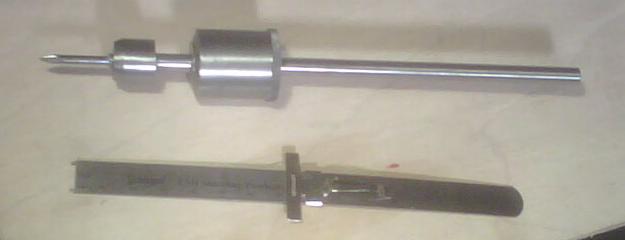mklotz
Well-Known Member
It seems that, whenever I get the prick punch located just so, I accidentally nudge it out of position while reaching for the hammer I've inevitably forgotten to lay close to hand.
So, I made a prick punch that has a built-in hammer.

The steel slug rides freely on the rod and is dropped, slidehammer-fashion, onto the steel plate pinned to the shaft to drive the prick punch into the work. The punch itself is made from an index hole punch rescued from an old mechanical teletype. The brass screw at the end hides a pocket to store extra punches and also serves to keep the hammer on the rod.
So, I made a prick punch that has a built-in hammer.

The steel slug rides freely on the rod and is dropped, slidehammer-fashion, onto the steel plate pinned to the shaft to drive the prick punch into the work. The punch itself is made from an index hole punch rescued from an old mechanical teletype. The brass screw at the end hides a pocket to store extra punches and also serves to keep the hammer on the rod.








